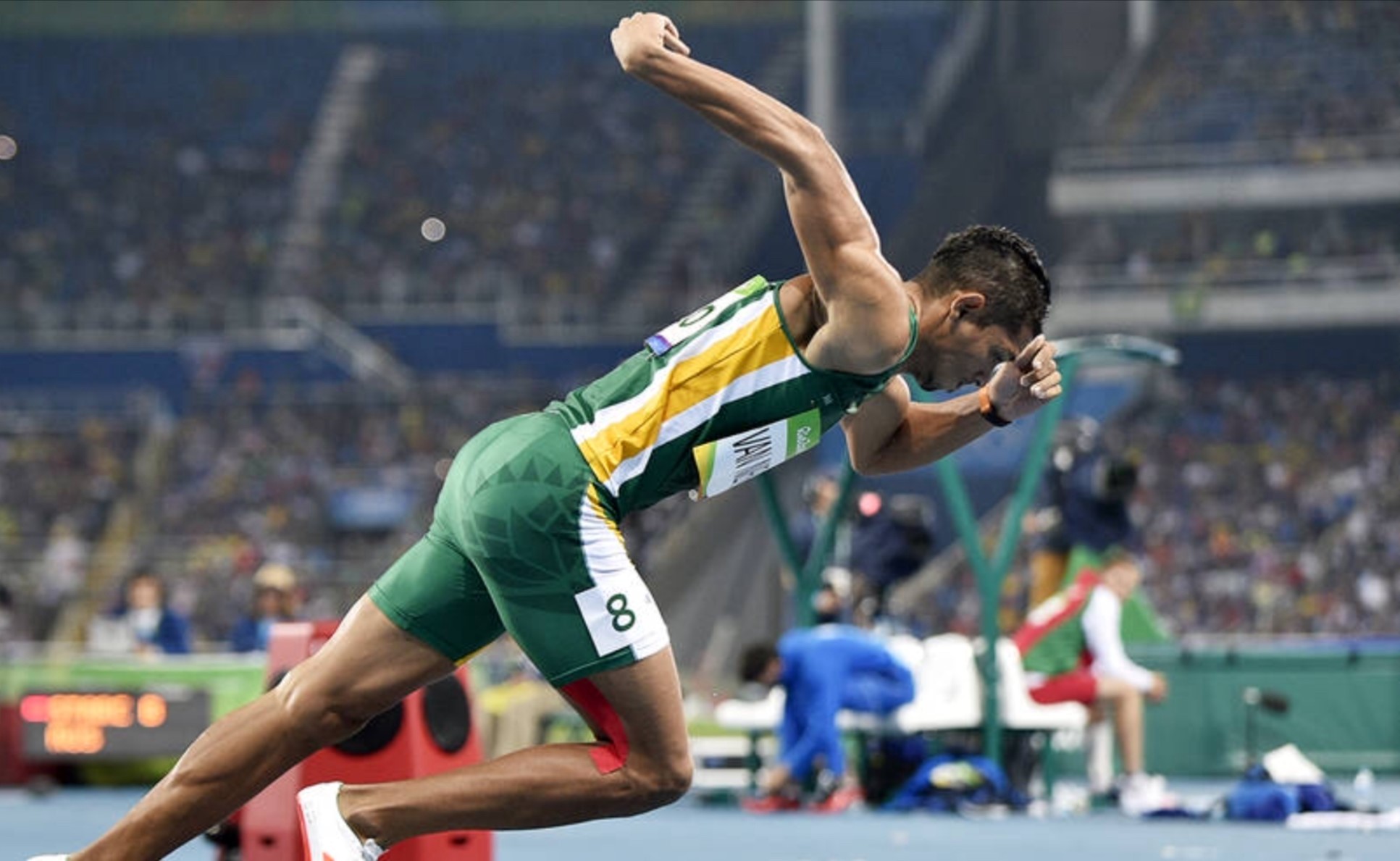THE BIOMECHANICS OF SPRINTING
By Odera Umeugoji
Biomechanics is the part of sport science concerned with how mechanical laws relate to the movement or structure of living organisms. There are both intrinsic and extrinsic biomechanics. Intrinsic biomechanics is the analysis of occurrences inside the body which create extrinsic movements, whilst extrinsic biomechanics is the analysis of the performance of these extrinsic movements.
One of biomechanics’ main applications is sport. In this article, the biomechanics of sprinting (within athletics) will be explored (many biomechanists investigate into how humans can run faster). Sprinting involves covering a distance (normally 100m, 200m, or 400m) in the shortest time possible. There are several factors which contribute to the time taken to cover a distance by sprinting, three of which include: the drive phase, stride length and stride frequency, and running technique. These 3 factors can be analysed biomechanically.
Wayde van Niekerk setting off to break the 400m world record at the Rio Olympics in 2016.
The Drive Phase
This is a sprinter’s acceleration from static in the starting blocks, to the point where their shin angle (the angle between the extended trailing leg and the track) reaches 90° (i.e. the athlete is virtually upright). The drive phase has a substantial impact on the final result of a sprint, so its speed and efficiency must be maximised. This is the purpose of biomechanical research on the drive phase.
In the drive phase, an athlete pushes the ground that is behind their centre of mass, causing them to move in a forward direction. In order to push in an area behind their own centre of mass, the athlete leans in a forward direction. Therefore, arm action must be hugely exaggerated in the drive phase to counteract this forward rotation. Otherwise, the athlete will fall forwards or stumble, causing them to decelerate significantly and complete the race in a longer time.
As a sprinter nears maximum velocity, they become more upright. In order to maintain a high velocity, stride length and stride frequency are important.
Stride Length and Stride Frequency
Stride length and stride frequency combine to determine one’s speed. Since speed is distance divided by the time, stride length and stride frequency can increase speed by reducing the time taken to cover a distance. In theory, a long stride length combined with a high stride frequency will lead to a faster speed.
Stride length (over 2.50m in some professional sprinters) can be defined as the distance between two successive placements of either foot. It is restricted by one’s ability to extend at the hip (dependant on the hip-flexor muscle) and the knee (dependant on the quadricep muscle). It is comprised of the take-off, flight and landing distances.
Stride frequency is the number of strides taken in a given amount of time. It is largely restricted by the nature of one’s muscle fibres (i.e. fast twitch or slow twitch). It is important that stride frequency is maintained as well as possible throughout a race in order to minimise the time in which a distance is covered. Therefore, it is important, that a sprinter also has good speed endurance.
Technique
Sprinting technique is extremely important. It should be as efficient (maximal output from minimal effort) as possible to minimise the waste of energy. Good technique can be achieved through the continuous drilling of relevant, efficient movements.
During sprinting (and all running), the legs move in a cyclical action. A sprinter’s leg is thrust backwards and downwards at a 50-55° angle, producing an equal and opposite reaction (Newton’s 3rd law) from the earth, which pushes the athlete forward in a predominantly horizontal direction. After being thrust backwards and downwards, the driving knee (previously behind the athlete’s centre of mass) is brought forwards and upwards, past the athlete’s centre of mass, meaning that the next ground contact (when the foot strikes the ground) is in front of the centre of mass. This action performed inversely with both legs causes the forward movement of a sprinter.
A sprinter’s foot lands outside (to the left or the right) of their line of gravity at ground contact. This causes a torque (turning force) at the hip, which causes either clockwise or counter-clockwise rotation (dependant on which foot touches down). Therefore, the arm swing is important, as it counteracts these torques. The arms move contra-laterally (in opposite directions) with the legs in order to counteract these forces. Without an arm swing, an athlete would spin left and right with each stride, meaning that they are less efficient.
